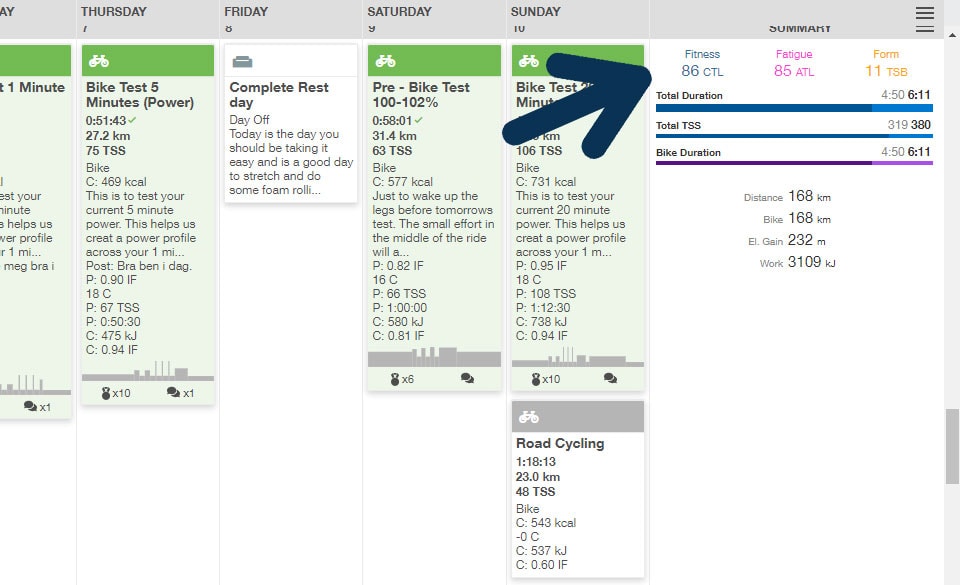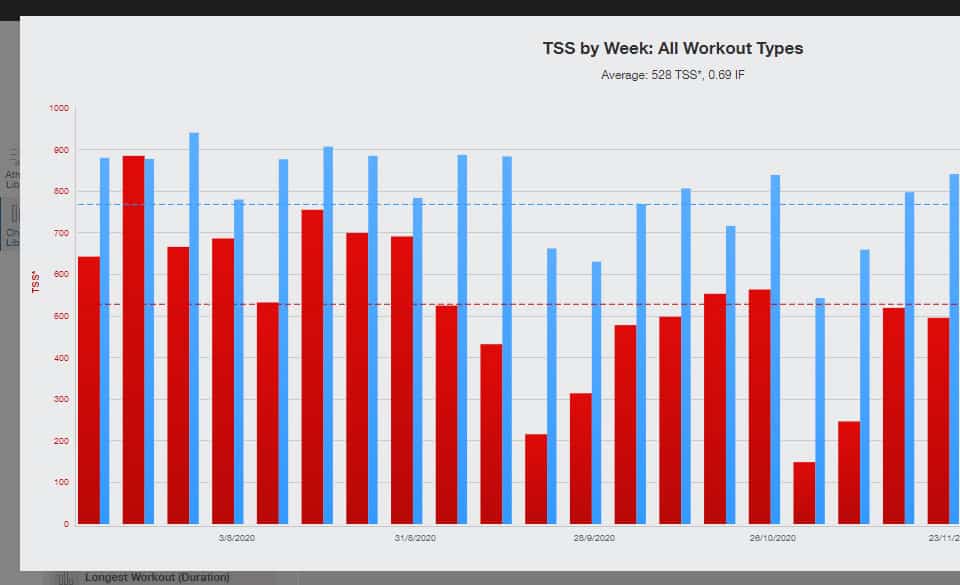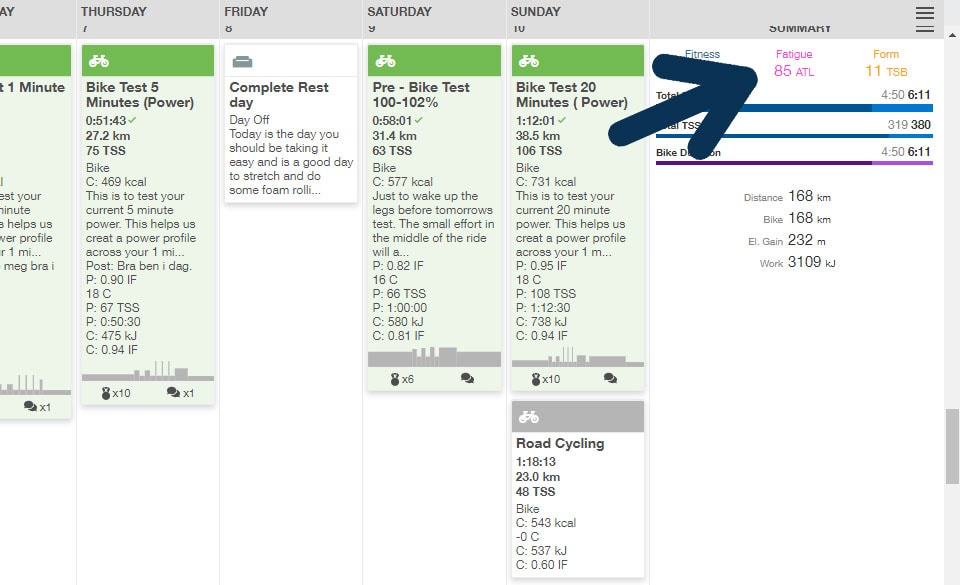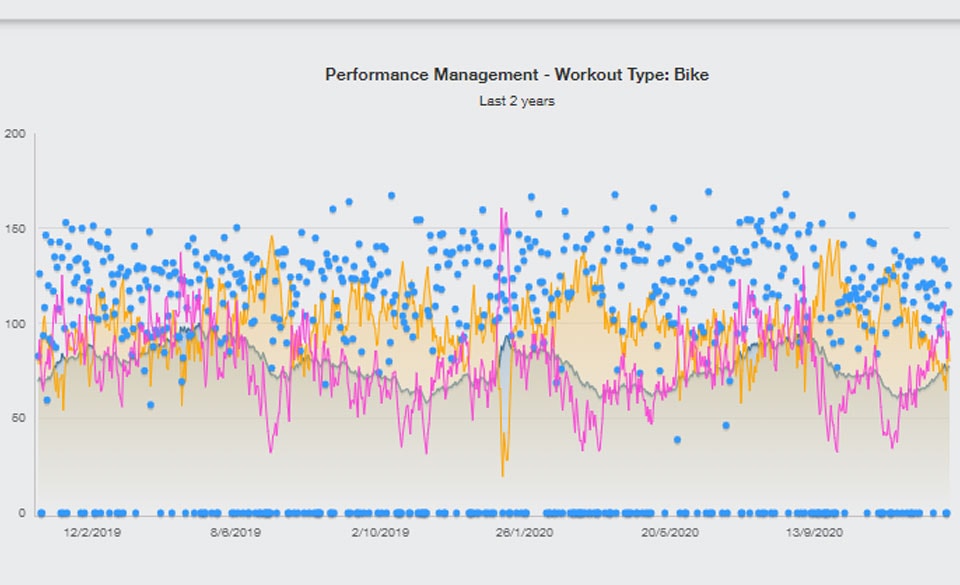
Chronic Training Load – UPDATED 2021 – Complete Guide To CTL Scores
Page Contents
To learn how to make improvements as an athlete, or design a program as a coach, you must understand Chronic Training Load. It’s a metric Training Peaks uses to help athletes and coaches track the true fitness of a person.
In this article, we discuss how Chronic Training Load is calculated, used, and what is a good CTL score is.
Chronic Training Load – A Complete Guide
First, you can find Choric Training Load figures in the Performance Management Chart in Training Peaks and the summary column for the week.
Chronic Training Load is a measurement of your fitness, and it takes your average TSS from your daily training. The average is then calculated based on the past six weeks or the last 42 days. The number defines your long-term training load and provides an insight into the athlete’s training load (through a line graph).
Think of CTL as a bit like a bank. Putting more money into your account will allow you to draw out more in the future. The less you put in will mean you won’t be able to draw out much later.
An upward trend would show an increased training load, and a downward trend would show a decrease in load. But what does this mean?
Progression and consistency is the key to performance, so a steady rise in CTL will help the athlete to prevent injuries and over training. This means alternatively a large rise in Chronic Training Load will show the athlete is incurring a large amount of training stress.
Fit athletes tend to be able to handle a greater training load. Their CTL can be increased more and usually quicker than the inexperienced athlete. But knowing this, we must still allow adequate recovery to reduce fatigue and injuries if pairing with a high CTL score.
Since both TSS and CTL are related, you can read our article on TSS here. For example, if an athlete has a CTL of 60 a hard workout would result in a TSS of 50-100% above the current CTL. A moderate workout would see a TSS score 25% above your CTL, while an easy workout would show 10-25% below your current CTL.

Chronic Training Load Calculation
The method or formula for Chronic Training Load Calculation goes as follows:
CTL= CTLy + (TSS-CTLy) / TCc
The above formula means that your CTL is Equal to Yesterday’s CTL plus your TSS minus Yesterday’s CTL divided by the CTL Time Constant.
Confusing, isn’t it? But don’t worry, Training Peaks calculates this automatically for you in the calendar and Performance Chart.

Acute Training Load
Since your CTL looks at past workouts there must be something that measures a more recent workout?
ATL or Acute Training Load measures your most recent training load. This measurement comes from the past 5-10 days of training and takes an average of the TSS. Think of this as a freshness indicator, and will give you a good indication of how the body is feeling.
Typically, if you are doing a lot of high TSS workouts, you will find that your Acute Training Load is high. During easier sessions or recovery weeks, you will find that your ATL is low. Basically, the lower the TSS score is, the lower the ATL is.
You can find your ATL via the Performance Management Chart, and in the summary box, at the end of each week in the calendar.
If you find you have a high ATL score and feeling fatigued, drop some recovery days into your cycling or triathlon training plan with a low TSS. Alternatively, take an unplanned rest day into your program. It can help you bring down the ATL score quite quickly.

Acute Vs Chronic Training Load
What is the difference between Acute vs Chronic Training Load? Acute is the simple term for a short-term training load, while Chronic is the long-term load on the body.
Both acute and chronic training load allows you to understand if your training is in balance. Giving you the chance to monitor your workload and see if it’s changing too much or too quickly. This gives you the perfect formula to track an athlete’s form and fitness, without the risks of injury and over training.

What Is A Good CTL Score?
You may be asking now, what is a good CTL score? Unfortunately, it depends entirely on the athlete. Their fitness should climb gradually throughout the season or training plan up to their event. Because CTL is measured by TSS, the combination of intensity, duration, and frequency over the past 42 days will dictate the athlete’s CTL. Once you start to taper, you will start to see your CTL drop, paired with the decline in fatigue.
The rate your CTL should climb can be anywhere around the 3-8 TSS/day per week to start with. Which will give you around a 21-56 TSS per week increase, a good figure to start with.



